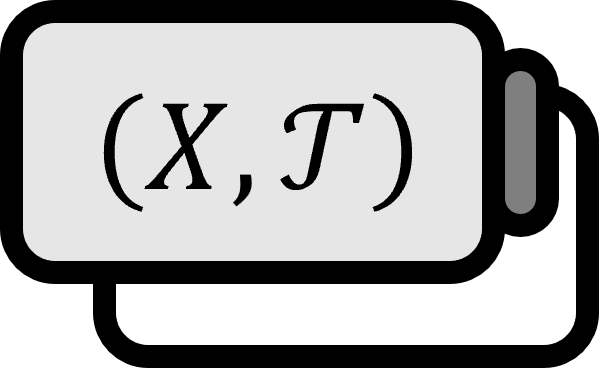Point Compactification
Definition 1
Let’s assume we have a topological space $(X , \mathscr{T})$ and call it $\infty \notin X$. For $X_{\infty} := X \cup \left\{ \infty \right\}$, a topology $\mathscr{T}_{\infty}$ defined by $(X_{\infty } , \mathscr{T}_{\infty} )$, which satisfies the following two conditions, is called the One-Point Compactification of $(X, \mathscr{T})$.
- (i): $\infty \notin U \implies U \in \mathscr{T}_{\infty}$ and $U \in \mathscr{T}$ are equivalent.
- (ii): It is equivalent for $\infty \in U \implies U \in \mathscr{T}_{\infty}$ and $X_{\infty} \setminus U$ to be closed and compact.
Theorem
$(X_{\infty } , \mathscr{T}_{\infty} )$ has the following properties.
- [1]: $(X , \mathscr{T})$ is a subspace of $(X_{\infty } , \mathscr{T}_{\infty} )$.
- [2]: $(X_{\infty } , \mathscr{T}_{\infty} )$ is compact.
- [3]: It is equivalent that $\overline{X} = X_{\infty}$ and $X$ is not compact.
Explanation
Of course, the symbol for a single point is just infinity and does not indicate any size or state.
For example, consider taking an open interval $(0,1)$ and another point $\infty$ outside of it.

Think of ‘bending’ the interval $(0,1)$ to form a curve.

The given interval does not include the endpoints $0$ and $1$. If we connect these using $\infty$, it forms the following shape.

As you know, this closed curve is compact.
The reason why we specifically define the point outside $X$ as $\infty$ is reasonable when considering the discussion leading to the Riemann sphere.
Munkres. (2000). Topology(2nd Edition): p185. ↩︎
